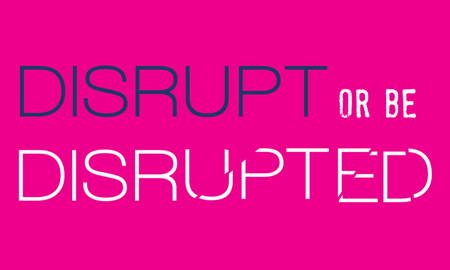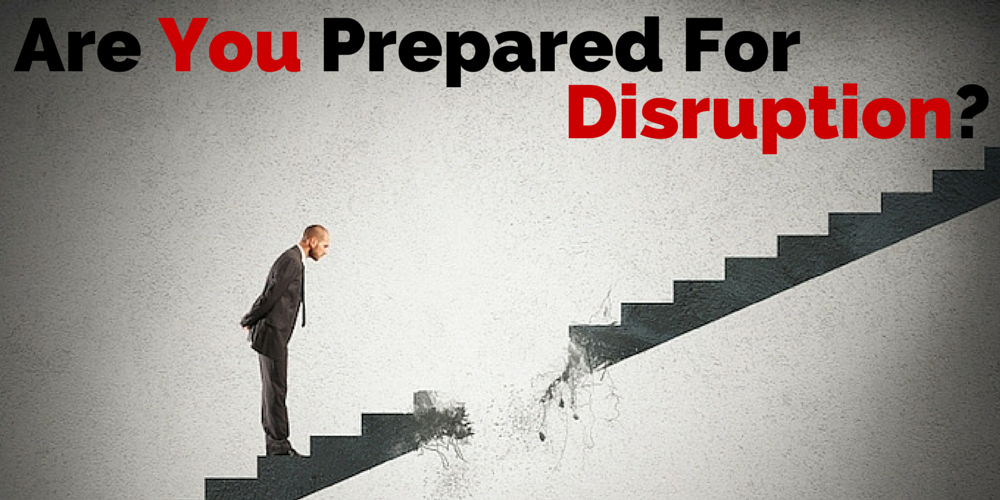If Stats Nerds and Video Nuts had a baby…
If you are a stats nerd like me; and work in media, then this website is a treasure trove….It’s called Datareportal.
In addition to being a stats nerd, I’m also a video nut. In this post I’m going to share a few things that jumped out at me on the digital 2024: Global Overview Report. Here is the link if you want to brows for yourself.

1st thing to note is that roughly two thirds of the world in online, connected with a personal device. Nearly 95% of them are social media users. My guess is that in under developed countries devices and internet connections are shared potentially hiking the percentage to 85-90%.
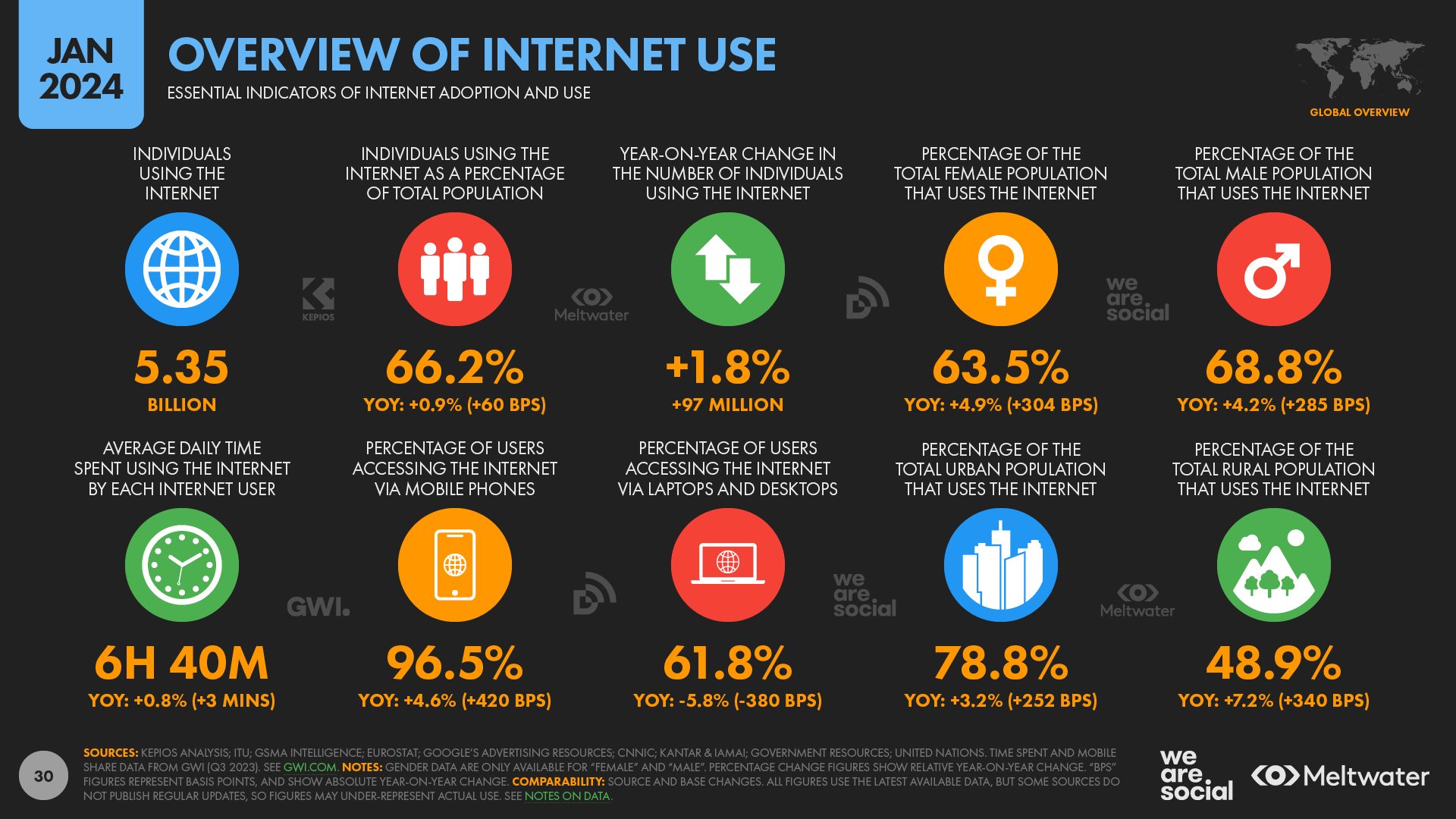
What jumped out at me from this slide was the avearge global amount spend on the internet. Bare in mind, that is for work, apps like Whatsapp, and watching streaming services such as Youtube and Netflix. Taking all in consideration, I’m somewhat supersized it is not higher….No Supersize that the majority are on their phones, but well over half use it on their stationary devices also.
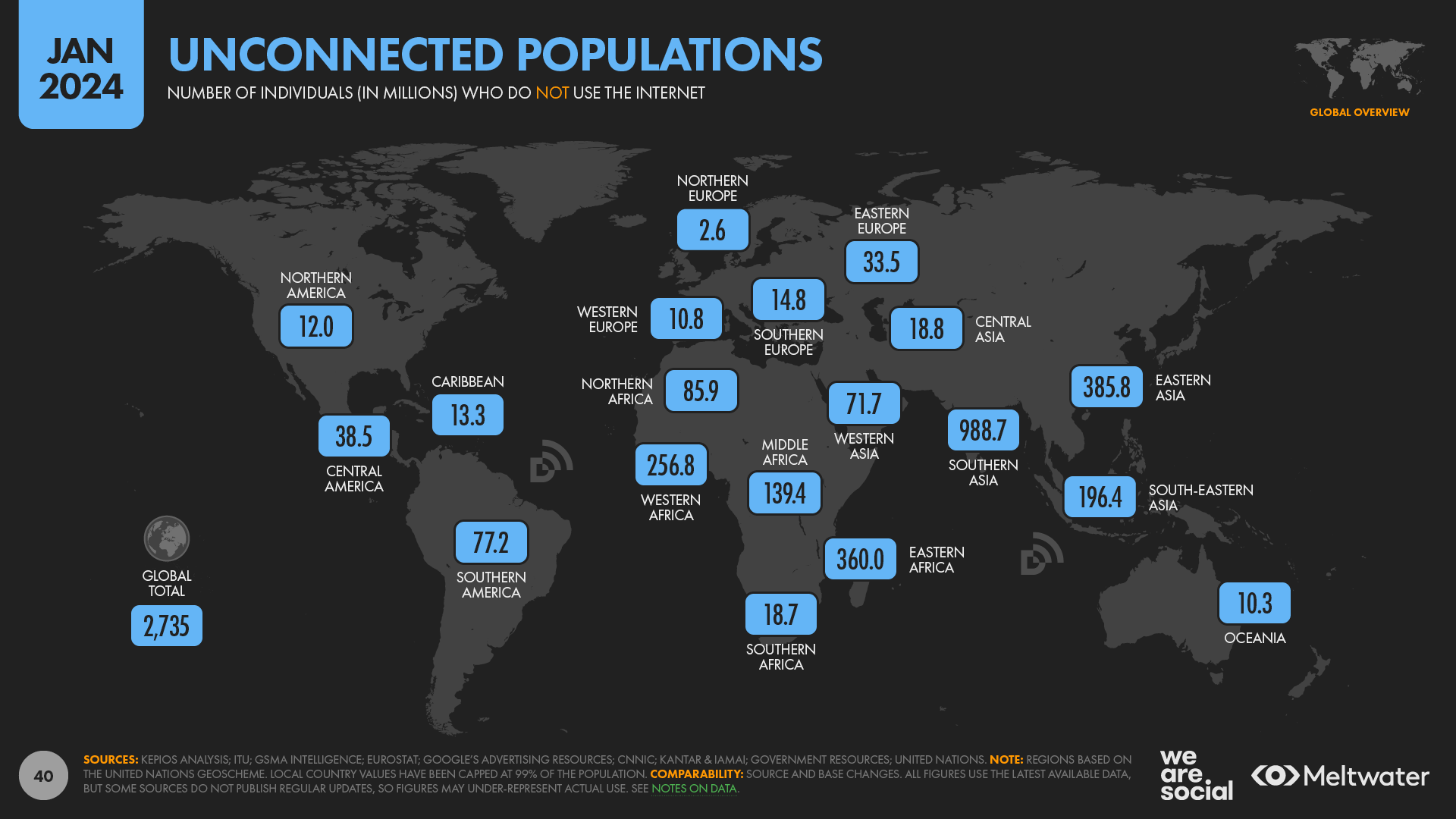
18.7 % of South Africans are not connected. My guess are it’s mostly infants under 2.
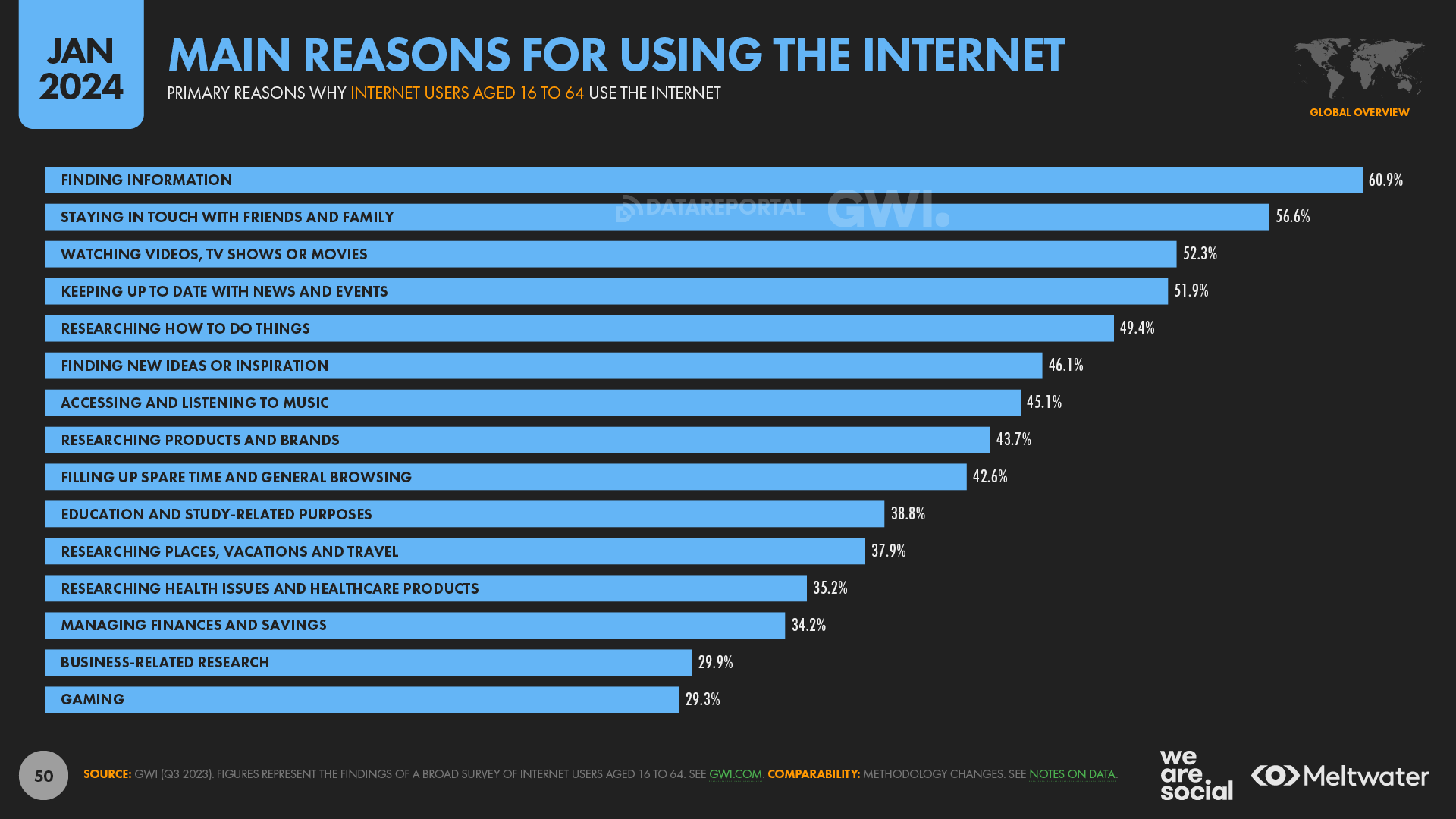
Note that the above slide shows reason and not time. My guess is that time spend on the internet will see a shuffle of what are evident here above.
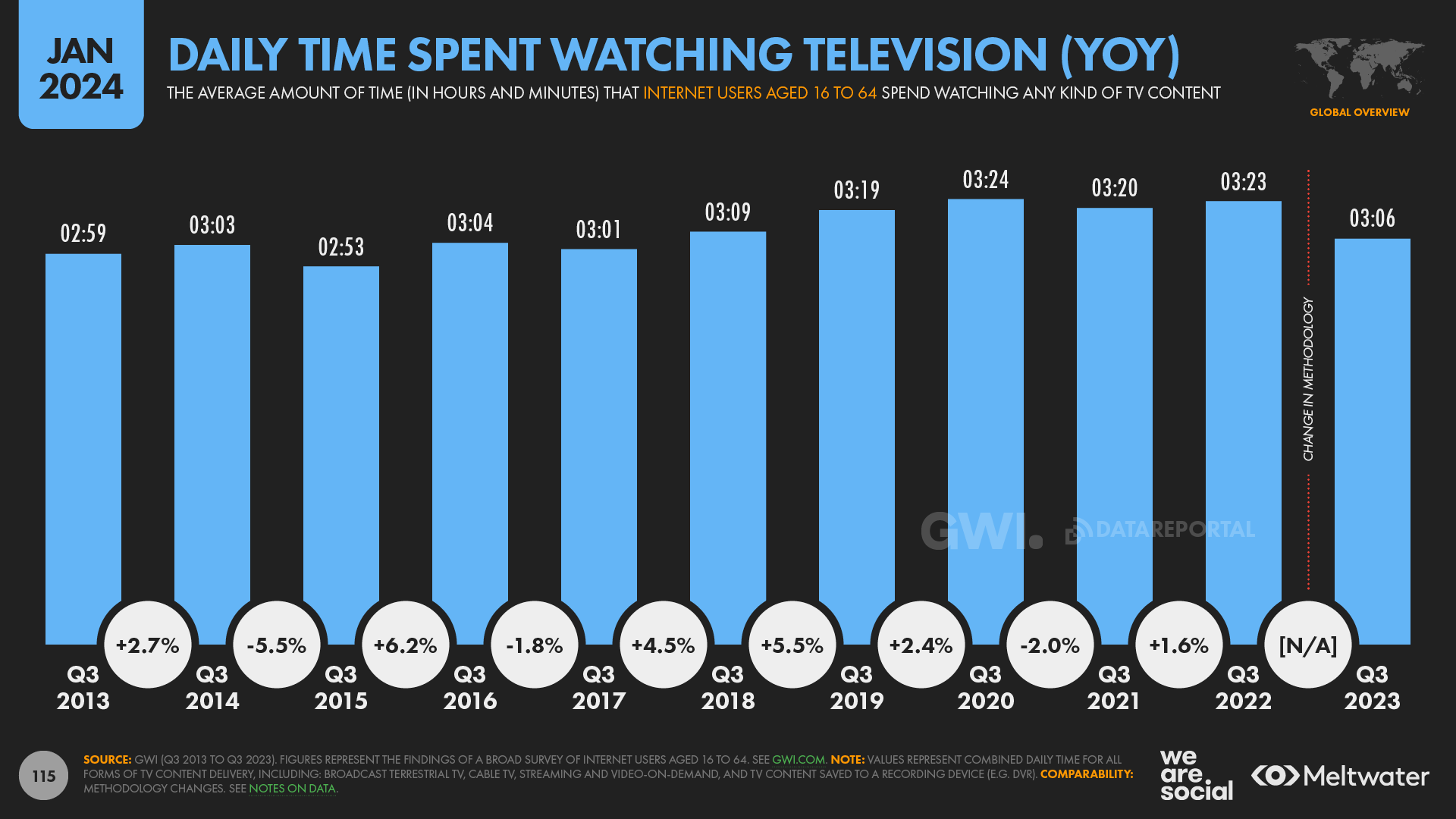
Apparently TV is still a thing. Who know. For how long still?
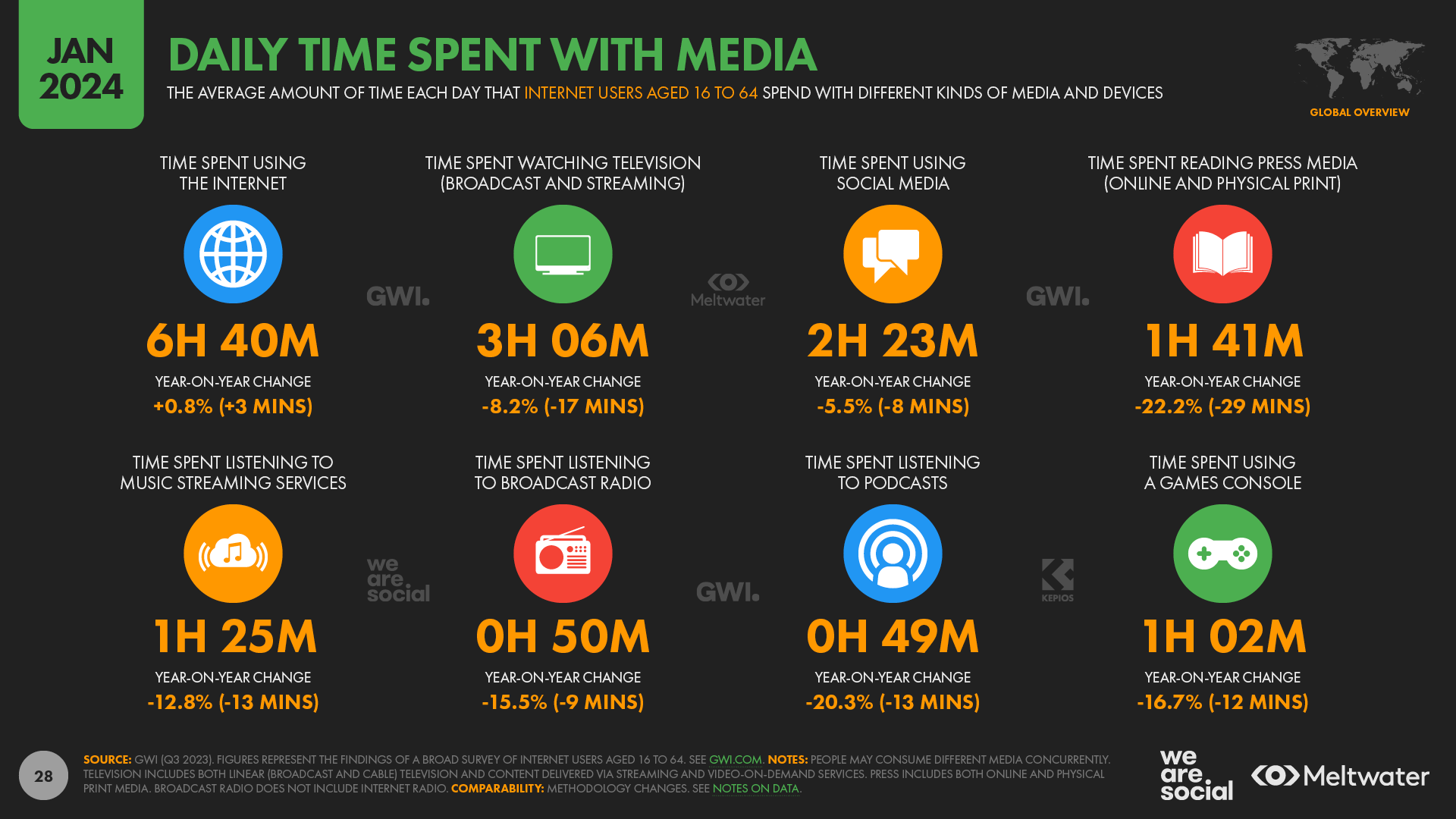
Roughly speaking, just under half of the seven hours average spend online everyday is watching video. Likely, while on Facebook and Instagram you are also spending a large amount of time consuming short video content. Audio only has a respectable slice of the pie, but my thinking that a break from traditional broadcasting will see a shake up in these figures.
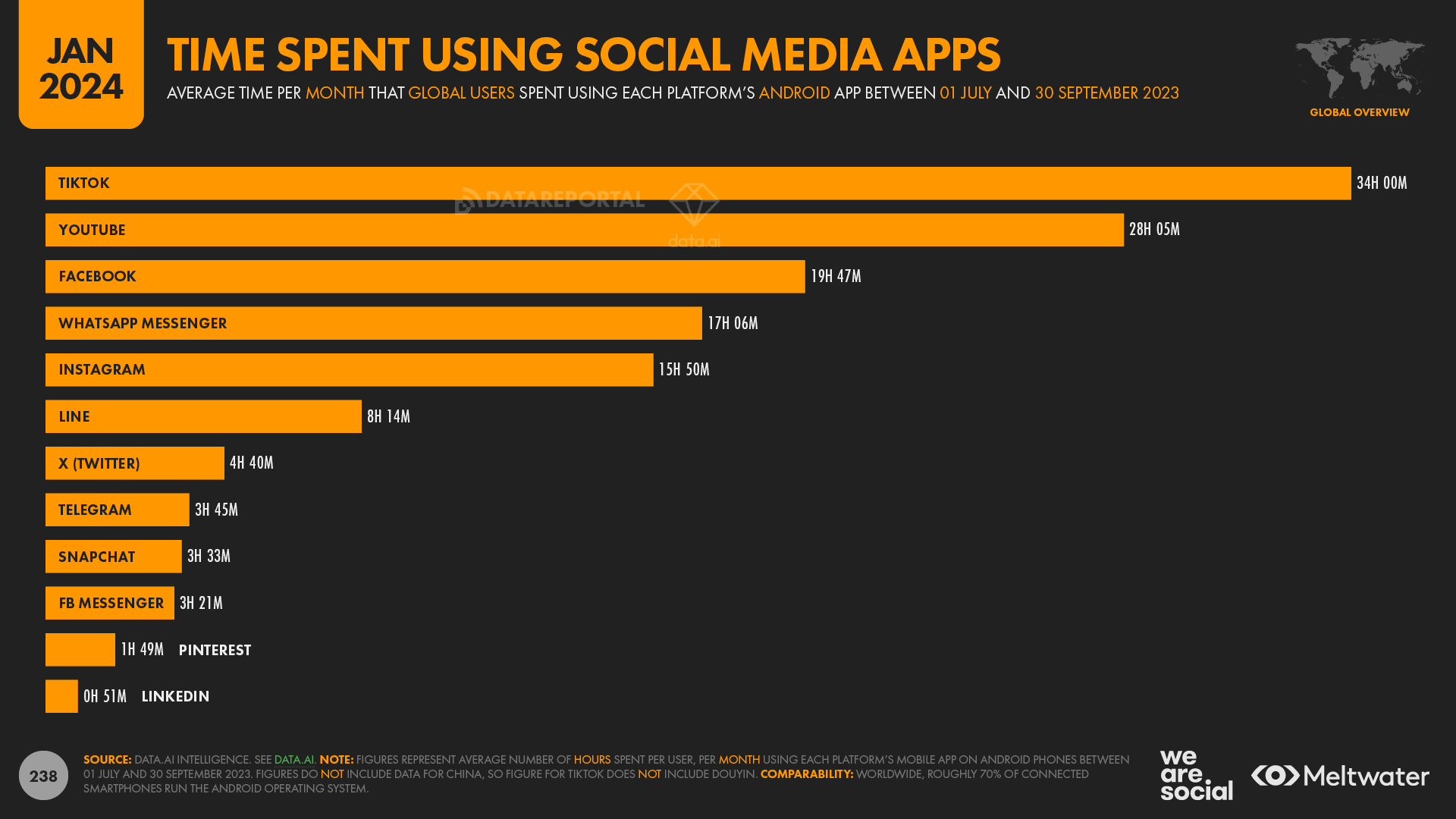
Here we’re getting to the crux of the matter. This is no surprise to parents with kids in the home. The more surprising thing is that add revenue penetration on TikTok has caped out at about 1.6%. I’m waiting to see what percentage YouTube – even though it’s second to TikTok, will slurp up. I predict MUCH MORE
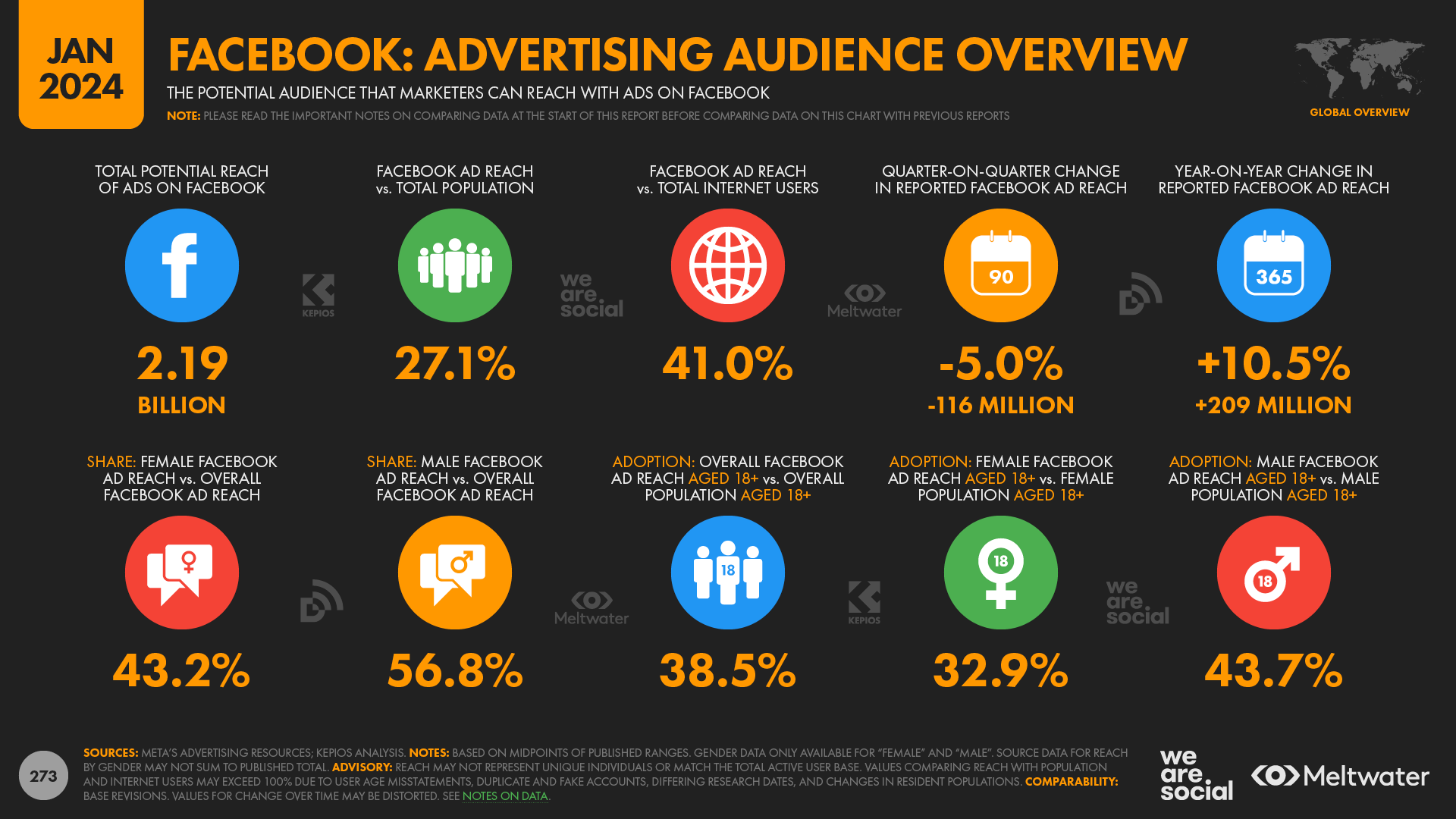
I’d thought I’d say something about Facebook’s add reach. It might be one of the biggest platforms for advertising. But in my trials with Facebook, it generated very low quality leads. Almost none of them was converted into a sale all the while working very hard to present to the prospecting clients. In comparison Google Ads gave a 1000% higher ROI in advertising revenue spent. Jobs coming from Google search was also an easier sale. But that is just me (working in media and video production).
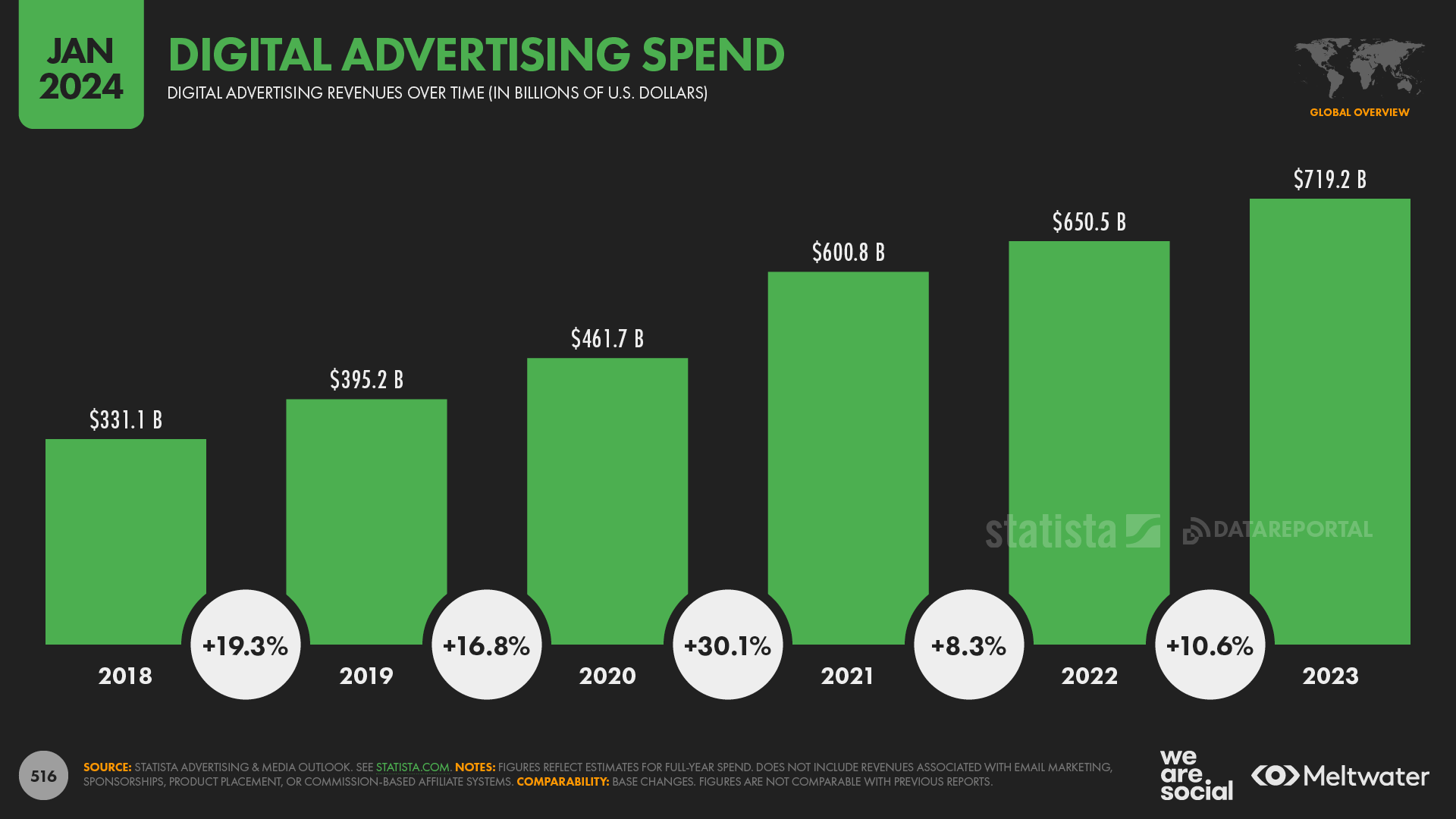
I almost wana say it looks like it’s more or less keeping up with inflation – this slide does not have me very exited.
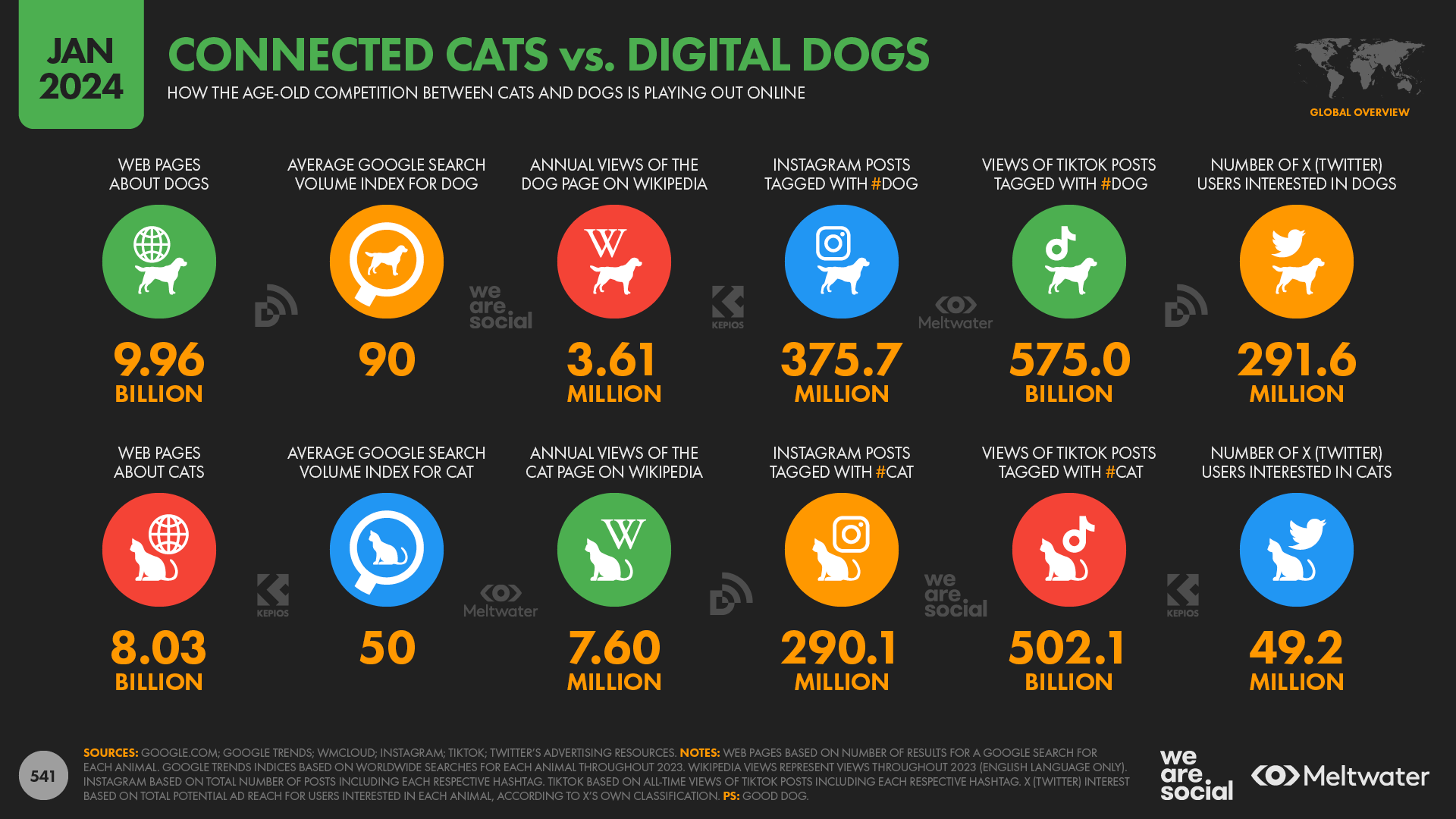
For a little fun. Dogs beat Cats everywhere except on Wikipedia.





